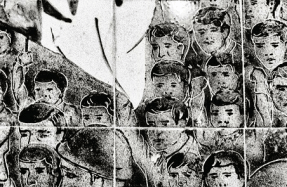
Doctor: You see her eyes are open. Gentlewoman: Ay, but their sense are shut. —Macbeth, act 5, scene 1
Unlike a dreamer or someone under hypnosis, a sleepwalker looks awake; they will leave their bed and move and even speak as if conscious. Their altered state may cause them to reveal their innermost thoughts, as does Lady Macbeth, who’s haunted by the deaths she and Macbeth have wrought, and every night gets up, paces, and rubs at the blood she imagines still stains her hands, indelible and stinking: “All the perfumes of Arabia will not sweeten this little hand.” Witnessing someone under the spell is an eerie experience, like eavesdropping on their secrets; it feels voyeuristic, since the sleepwalker does not know you are there. “You have known what you should not,” the Doctor says to Lady Macbeth’s Gentlewoman.
Lady Macbeth’s nightmares return us to the scenes of the couple’s crimes, and what is past becomes present, over and over again—not only for her but for the audience as well. Her torments also foreshadow her imminent death: a sleepwalker is a living phantom, not risen from the dead but on the threshold. A proleptic ghost. Lady Macbeth walks at a certain time of the night, as does Hamlet’s father’s ghost, disappearing and in Samuel Beckett’s responses to Dante (, ), the dead are shut off in their memories, condemned to endless repetition. A sleepwalker, unresponsive to all else but their inner world, is similarly closed off.






